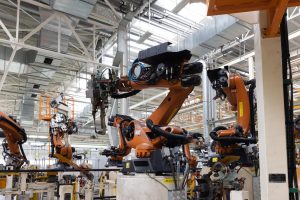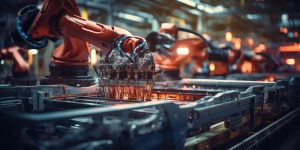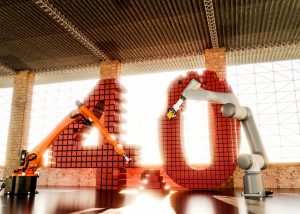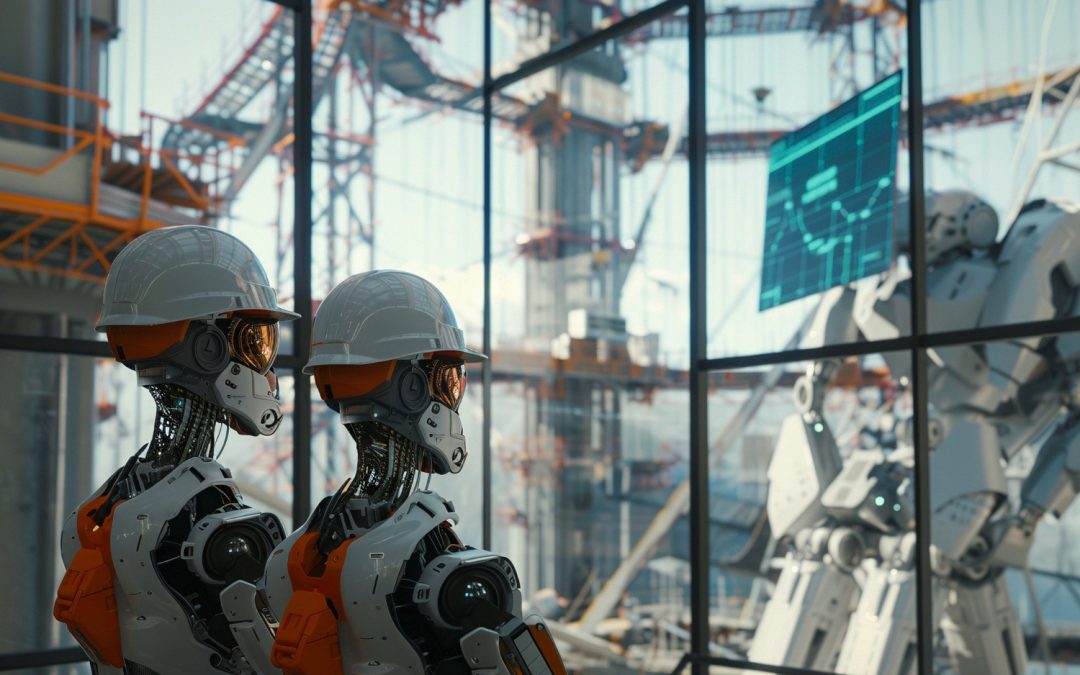In today’s world that moves with tremendous speed, industrial automation and robotics are transforming industries by improving efficiency and cutting costs. These terms are subsequently viewed interchangeably despite the fact that they are being referred to by different technologies and different functions.
Knowledge of the difference between industrial automation and robotics can help them carefully consider and deploy the right technology to meet their particular objectives.
What is Industrial Automation?
Industrial automation is the method that accepts control systems (e.g., computer or robot) and information technology to do the procedures and machines handled by people in an industry. This machine is made to complete monotonous tasks, eliminate unnecessary wastes, and maintain the quality of the products.
Example: The automation industry goes even further in the sample of an industrial automation like a car assembly line where by use of machines and robots all the conventional occurrences like welding, painting, and assembling of parts are done without human involvement.
What is Robotics?
Robotics is a discipline of engineering and science related, dealing with the creation, launching, operating and exploiting of robotic systems. Robots are the programmable machines, which can conduct such complicated and directly or semi-directly (automatically) just using sensors data.
Example: Alongside in the same car manufacturing plant, a sophisticated robotic arm set to carry and place components with great accuracy and speed is the epitome of robotics.
Difference Between Industrial Automation and Robotics
In this blog, we will learn what industrial automation and robotics are, how they differ, and also learn which one is better industrial automation vs robotics.

Scope and Application
Industrial Automation: It includes all technologies and systems that eliminate the need to carryout tasks manually by automating the entire process. This however is not only about machines which includes robots but also inherently control systems, software, and information technologies.
It covers the whole production line area by looking for the ways that will improve efficiency and keep track of waste and other related problems.
Robotics: Mainly addresses the subject of developing and using artificial intelligence. They are ones that can perform particular machine-only jobs without supervision. Only being a part of the wider automation environment though, they form an automation subset.
Complexity and Flexibility
Industrial Automation: Usually implies complicated systems that are created to meet concrete production necessities. These devices are generally less flexible because their design does not allow them to undertake task repetitively as needed.
Robotics: Provides elasticity and reprogrammed for doing just something. Roster can bypass the retraining of repeat processes that can be mastered faster than human-driven robots.
Human Interaction
Industrial Automation: The mission of the robots was to make people’s lives easier. Once installed, such systems need minimal human interaction and further operations.
Robotics: While robots work autonomously, they most often work in such environments with human partners as a member of a team. To clarify, cobots are an example of robots that are designed to help human workers, actually improving productivity and safety.
Checkout: 7 Ways How Automation Increases Productivity in Industries
Examples of Use
Industrial Automation: One of the largest industries using essential oils is the pharmaceutical, food and beverage, and textile sector. For example, automated sorting robots in warehouses or automatic machines in beverage factories.
Robotics: An example of new industries that weren´t related to manufacturing before the introduction of AI but are now, includes manufacturing (surgical robots), healthcare (automated guided vehicles), and even household use (robotic vacuum cleaners).
Data and Insights

Market Growth
The global industrial automation and control systems market size was valued at USD 172.26 billion in 2022 and is anticipated to register at a compound annual growth rate (CAGR) of 10.5% from 2023 to 2030.
Efficiency Improvement
Research projects have demonstrated that industrial automation and robotics adoption might cut down production time by 20-30 percent, and that quality might increase up to 50 percent as compared by its predecessors.
Robotics Adoption
According to the International Federation of Robotics (IFR), the number of industrial robots operating globally is projected to grow to the 4 million units mark by 2025, which indicates a well-established trend of adoption.
Conclusion

While industrial automation and robotics are strongly linked and work perfectly together, they are different fields with a specific aim of implementation and benefit. Automation in manufacturing is more general involving automation of the production process, while robotics is about creating robots that do only one job for a long time.
Knowing these features can assist organizations to choose a suitable technology which can be used to save costs, reduce waste of time, and enhance productivity of the organization. Indeed, the combination of industrial automation and robotics will provide companies with the agility they need.
Understanding these differences of industrial automation vs robotics can help businesses leverage the right technology to optimize their operations, increase productivity, and remain competitive in the modern industrial landscape.
